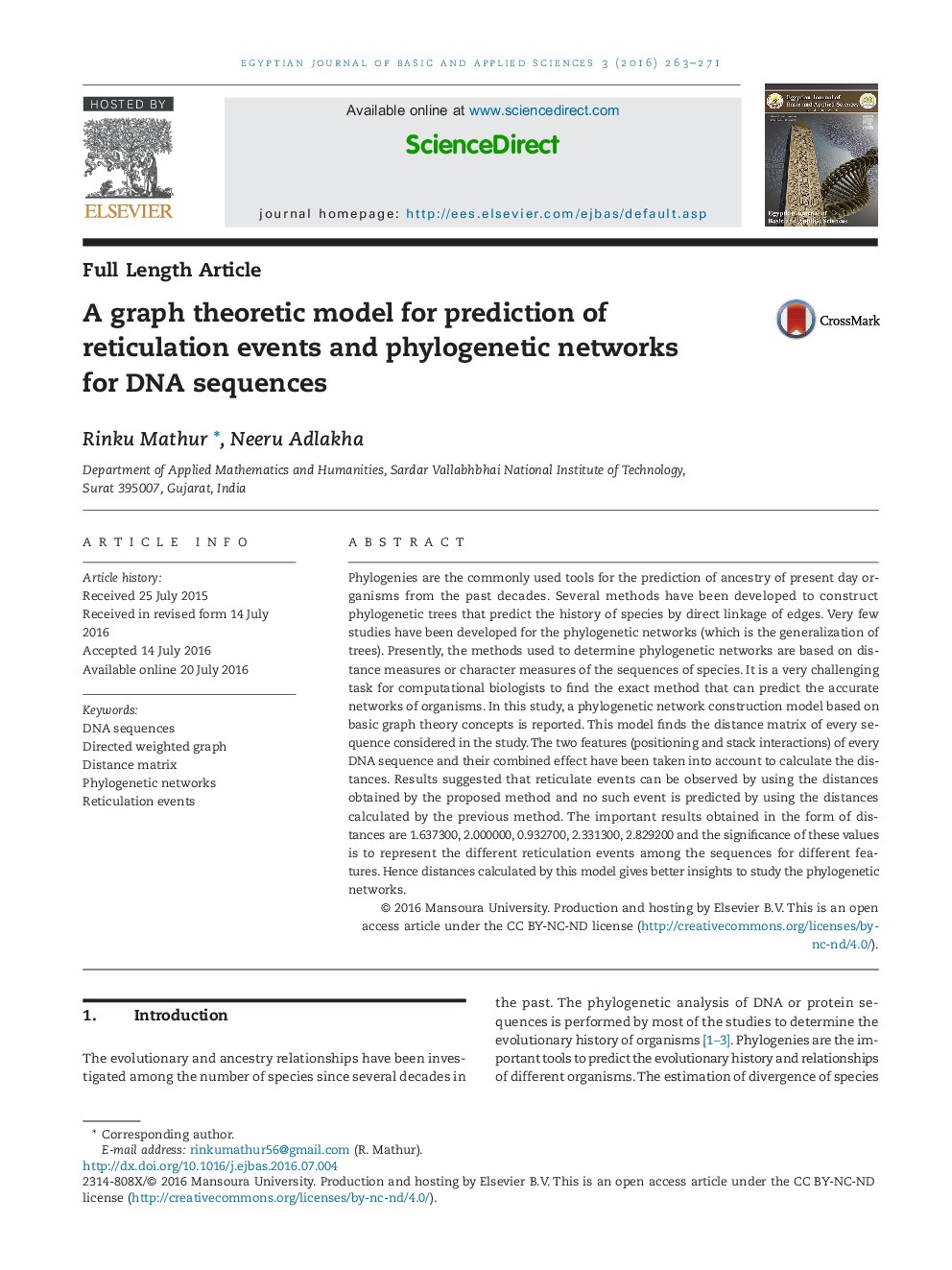| Article ID | Journal | Published Year | Pages | File Type |
|---|---|---|---|---|
| 560991 | Egyptian Journal of Basic and Applied Sciences | 2016 | 9 Pages |
•A phylogenetic network construction model based on basic graph theory concepts has been presented.•Reticulate events can be observed by using the distances obtained by the proposed method.•The proposed model provides the individual information of every DNA sequence in the form of distances.•The model saves the time of multi-alignment of the sequences as these are presented in the form of distances.•The proposed model performed well in determining the reticulation events and gave us better result as well.
Phylogenies are the commonly used tools for the prediction of ancestry of present day organisms from the past decades. Several methods have been developed to construct phylogenetic trees that predict the history of species by direct linkage of edges. Very few studies have been developed for the phylogenetic networks (which is the generalization of trees). Presently, the methods used to determine phylogenetic networks are based on distance measures or character measures of the sequences of species. It is a very challenging task for computational biologists to find the exact method that can predict the accurate networks of organisms. In this study, a phylogenetic network construction model based on basic graph theory concepts is reported. This model finds the distance matrix of every sequence considered in the study. The two features (positioning and stack interactions) of every DNA sequence and their combined effect have been taken into account to calculate the distances. Results suggested that reticulate events can be observed by using the distances obtained by the proposed method and no such event is predicted by using the distances calculated by the previous method. The important results obtained in the form of distances are 1.637300, 2.000000, 0.932700, 2.331300, 2.829200 and the significance of these values is to represent the different reticulation events among the sequences for different features. Hence distances calculated by this model gives better insights to study the phylogenetic networks.
